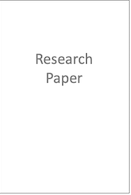Need a way to discover new concepts for your service?
Blue Ocean Strategy contains a few tools that give a great way to look at and discover New Service Concepts (one of five dimension in our services innovation model).
We take Gallouj & Weinstein's idea that a service is a matrix of four sets of characteristics. And say those characteristics are the attributes in a Blue Ocean Canvas. Then, using the Blue Ocean Four Actions Framework we can ideate service concepts by either raising, reducing, creating or eliminating characteristics.
The resulting new service concepts nicely adhere back to Gallouj & Weinstein's categorisation of service innovations: radical, improvement, incremental, ad-hoc, recombinative (architectural) and formalisation







